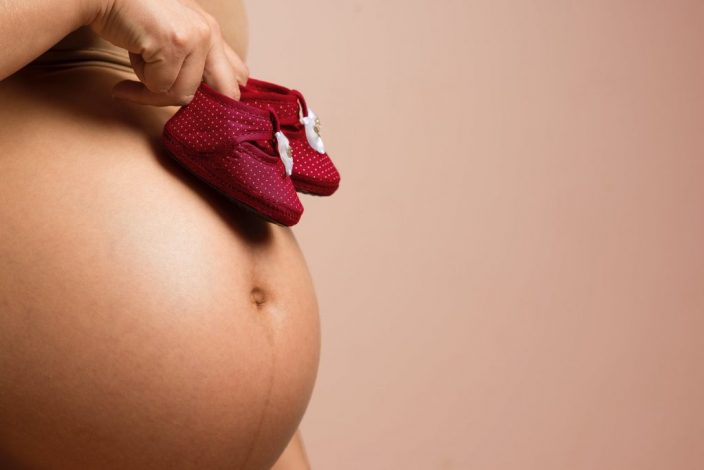Speaking about her fertility challenges and her journey with In Vitro Fertilization (IVF) to try and get pregnant, former US First Lady Michelle Obama has helped shine a light on the experience of many women.
The former first lady of the United States, 58, revealed that she secretly conceived her two daughters several years ago through the process, admitting, “I was trying to get pregnant. It was a challenging road for me, the baby-making road.”
Similarly, Jennifer Anniston said she recently went through IVF and was drinking herbal tea. She said that she was throwing everything at it and almost gave up. She said she would have given anything if someone had told her to freeze her eggs.
IVF is a fertility treatment procedure that can help with conception if you have problems conceiving. An egg is removed from the woman’s ovaries and fertilised with sperm in a lab.
Once fertilised, the egg is called an embryo and is returned to the womb to grow and develop, just like a normal pregnancy. It can either be carried out using your eggs and your partner’s sperm or with eggs and sperm from donors.
This is different to egg freezing when they aren’t mixed with sperm but instead stored to be used in the future. Freezing healthy sperm or eggs while you are young can increase the chances of successful fertility treatment later on.
Especially in today’s scenario, when girls are busy studying, making careers, and postponing pregnancy to a later date, it is crucial to understand that every woman is born with a certain number of eggs, which decrease with age.
It is not only the number but also the quality of eggs that reduces with age, making it difficult for them to get pregnant over the past 40 years. So young girls not planning a pregnancy must freeze their eggs as soon as possible.
What happens during IVF?
If you have difficulty getting pregnant, your first port of call should be to speak to a fertility specialist, who can advise on improving your chances.
The process has six main stages, which include:
1. Helping your ovaries produce more eggs
You’ll be given fertility hormones to help your ovaries produce more than one egg at a time. This aims to collect and fertilise more eggs, increasing the choice of embryos to use in the procedure.
Different kinds of protocols are used for getting a good number of eggs from different categories of patients.
All the latest and best evidence-based protocols, including the minimal stimulation protocol, preimplantation genetic screening testing, laser hatching, PRP treatments, and TESA, are available at Myra IVF and Medical centre.
3. Monitoring your progress and ‘maturing’ your eggs
Vaginal ultrasound scans every 3–4 days will be used to monitor the development of your eggs, and the dose of injections being adjusted accordingly to avoid hyperstimulation and blood tests.
Ours is an OHSS-free clinic, as we use the latest protocols to ensure that stimulation is safe for all patients.
4. Collecting eggs
Your eggs will be collected using a needle passed through your vagina, under short anaesthesia, into each ovary with the help of an ultrasound, lasting around 15 to 20 minutes.
You will be sedated during the collection but might experience cramps or a small amount of vaginal bleeding afterwards.
5. Fertilising eggs
The eggs are mixed with the sperm in a lab to fertilise them. Sometimes, each egg might need to be injected individually with a single sperm, called intra-cytoplasmic sperm injection or ICSI (an advanced form of IVF to get more embryos)
The embryos will then grow in the lab for three to five days before being transferred into the womb, with one or two of the best chosen.
You’ll have been given hormone medicines to help prepare the womb lining to receive the embryo.
The extra embryos generated are frozen for future use.
6. Transferring embryos
When the embryos are placed into your womb, done with a thin tube called a transfer catheter, the procedure is more similar to having a cervical screening or smear test, and you won’t need to be sedated.
The number of embryos that will be transferred should have been decided before starting treatment, which can be dependent on your age and which IVF cycle you’re in.
If any healthy embryos remain, they can be frozen for other attempts.
After the embryo transfer, you should wait around two weeks to have a pregnancy test to see if it has worked.
The chances of IVF success depend on age, the cause of infertility, and other associated conditions.
While it is possible and a perfect option for some, it is also unsuccessful in many cases. You should wait a couple of months before trying again, as it can be a difficult emotional journey.
There are a few other risks of IVF to consider, too, including side effects from medicine, multiple births, and other complications, which can be taken care of by close monitoring and using appropriate drugs for each patient.
Experts also recommend that counselling be offered before, during, and after IVF, regardless of the outcome, to help you understand the implications of treatment and provide support at difficult times. This talking therapy will allow you to discuss your problems and feelings confidently.
IVF can be physically and mentally challenging, but there is help and support out there if you need it.
Dr Sarita Sukhija is Medical Director and IVF Expert Myra IVF and Medical Centre. Email drsarita2007@gmail.com / myrakenyaivf@gmail.com




